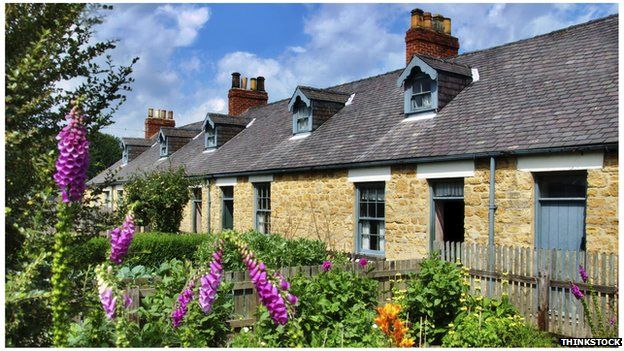UK's 'most desirable' postcodes revealed
- Published

The most desirable postcodes in England, Scotland and Wales have been revealed by Royal Mail.
The firm evaluated the employment opportunities, quality of health and education, crime rates and housing affordability of areas across Britain.
The garrison town of Tidworth, in Wiltshire - postcode SP9 - was crowned the best place to live in England.
G44, on Glasgow's south side, topped the Scottish table, while LL78, Brynteg on the Isle of Anglesey, won for Wales.
The study, carried out to mark the 40th anniversary of the postcode, was conducted in conjunction with the Centre for Economic and Business Research (CEBR).
It took the following factors into account, using data from government agencies, the Office for National Statistics and the Land Registry
Employment opportunities
Health
Education and training opportunities
Levels of crime
Homelessness
Household overcrowding
Ease of access to local services
Quality of the physical environment
Housing affordability
Tidworth is famous for its polo clubs
In England, Tidworth, on the edge of Salisbury Plain in Wiltshire, came first. The town is widely known for its military barracks, as well as for its polo club, which is frequented by the royal family.
Despite being near a nuclear power station, Largs in Scotland is a popular resort
The south side of Glasgow was named the most desirable place to live in Scotland. An affluent residential neighbourhood, G44 is home to golf courses and parks.
The Duke and Duchess of Cambridge spent their first years of marriage on Anglesey
Brynteg, on the Isle of Anglesey off the coast of north-west Wales, topped the charts in that country. The village, home to fewer than 2,000 people, offers spectacular views of the surrounding countryside, and is a popular holiday destination.
There are around 1.8 million postcodes across the UK, covering a total of over 29 million addresses.
The combination of letters and numbers was chosen because it was considered easier to remember that a string of either numbers or letters on their own.
- Published21 August 2014
- Published7 April 2014
- Published21 December 2013